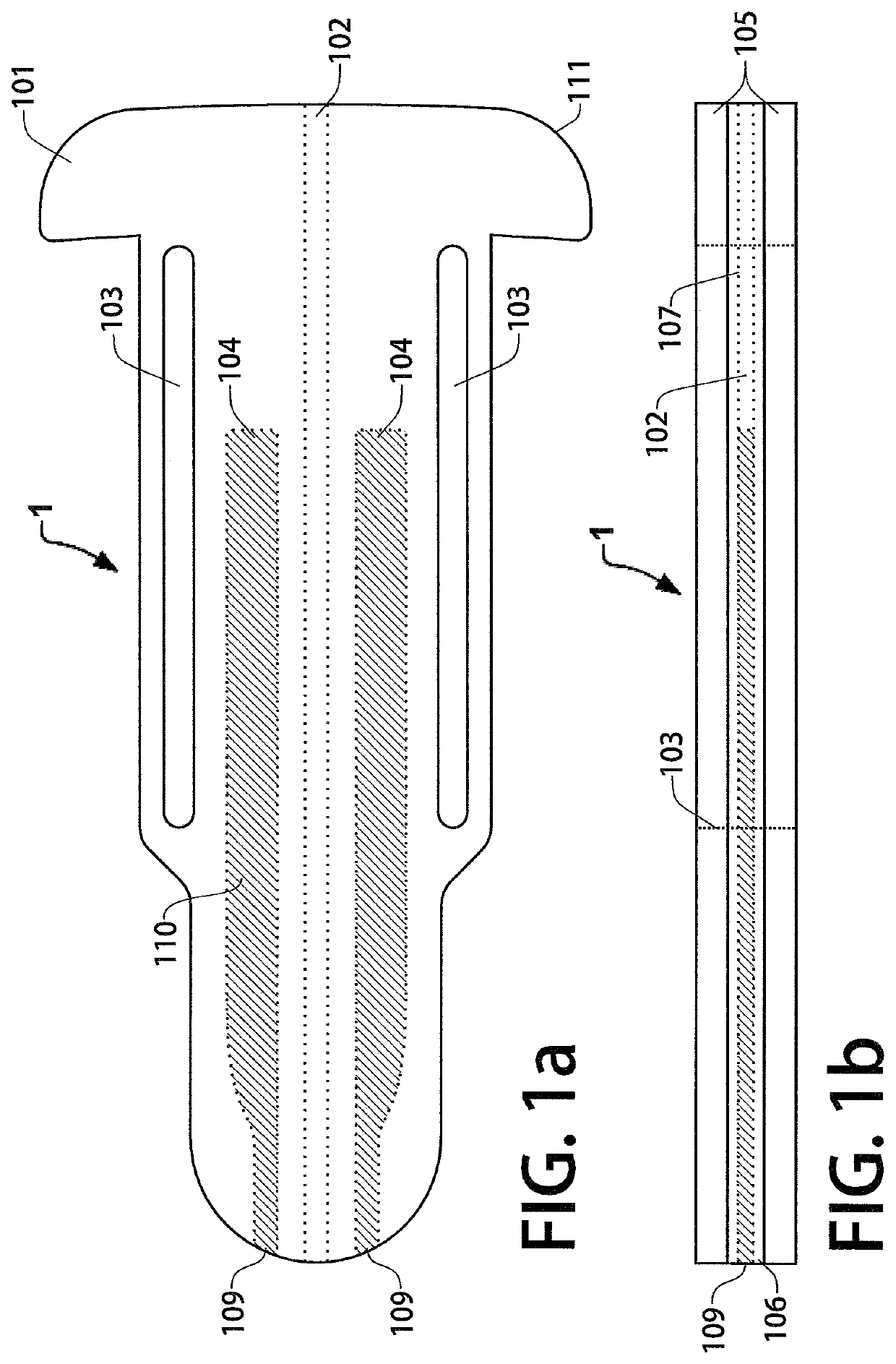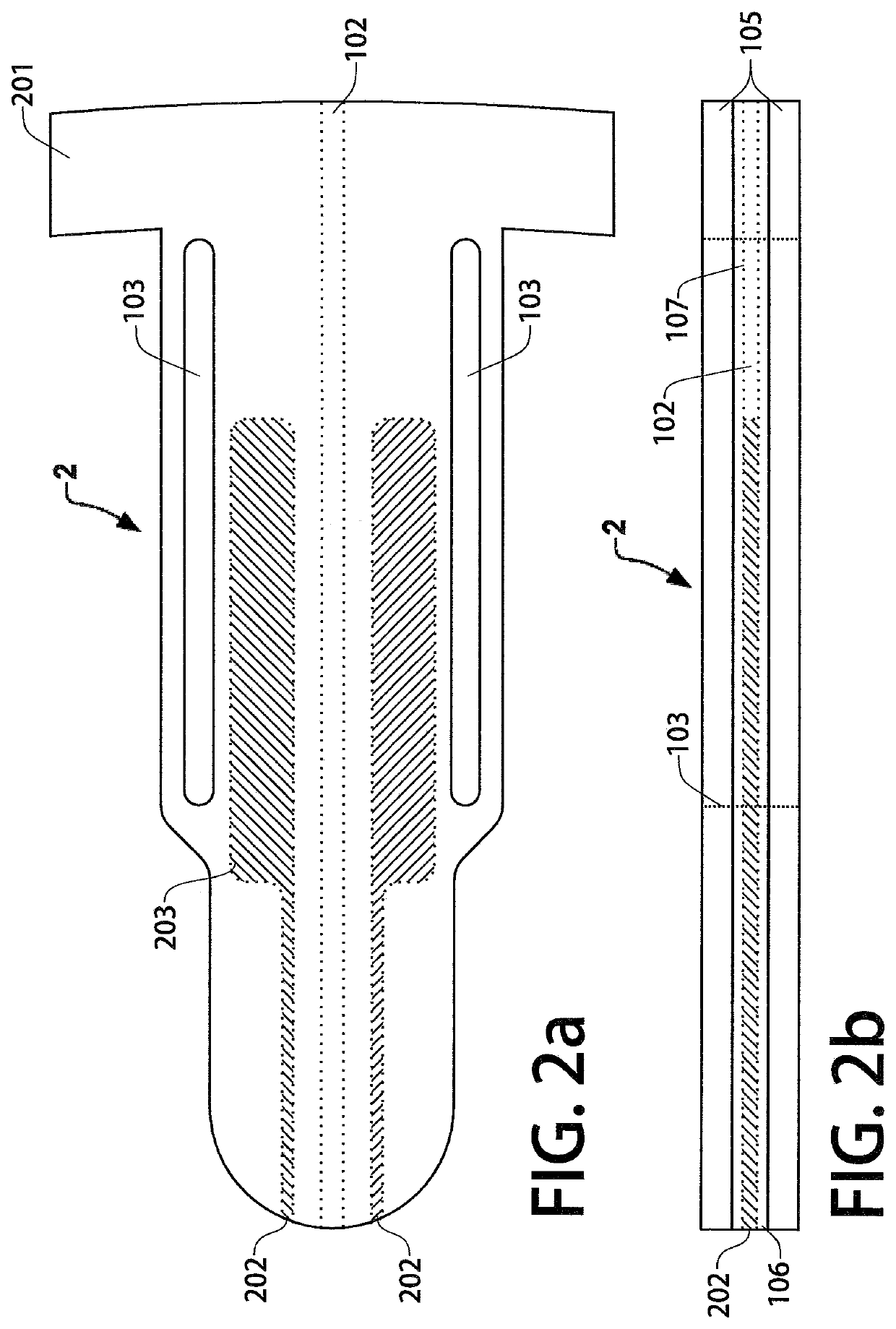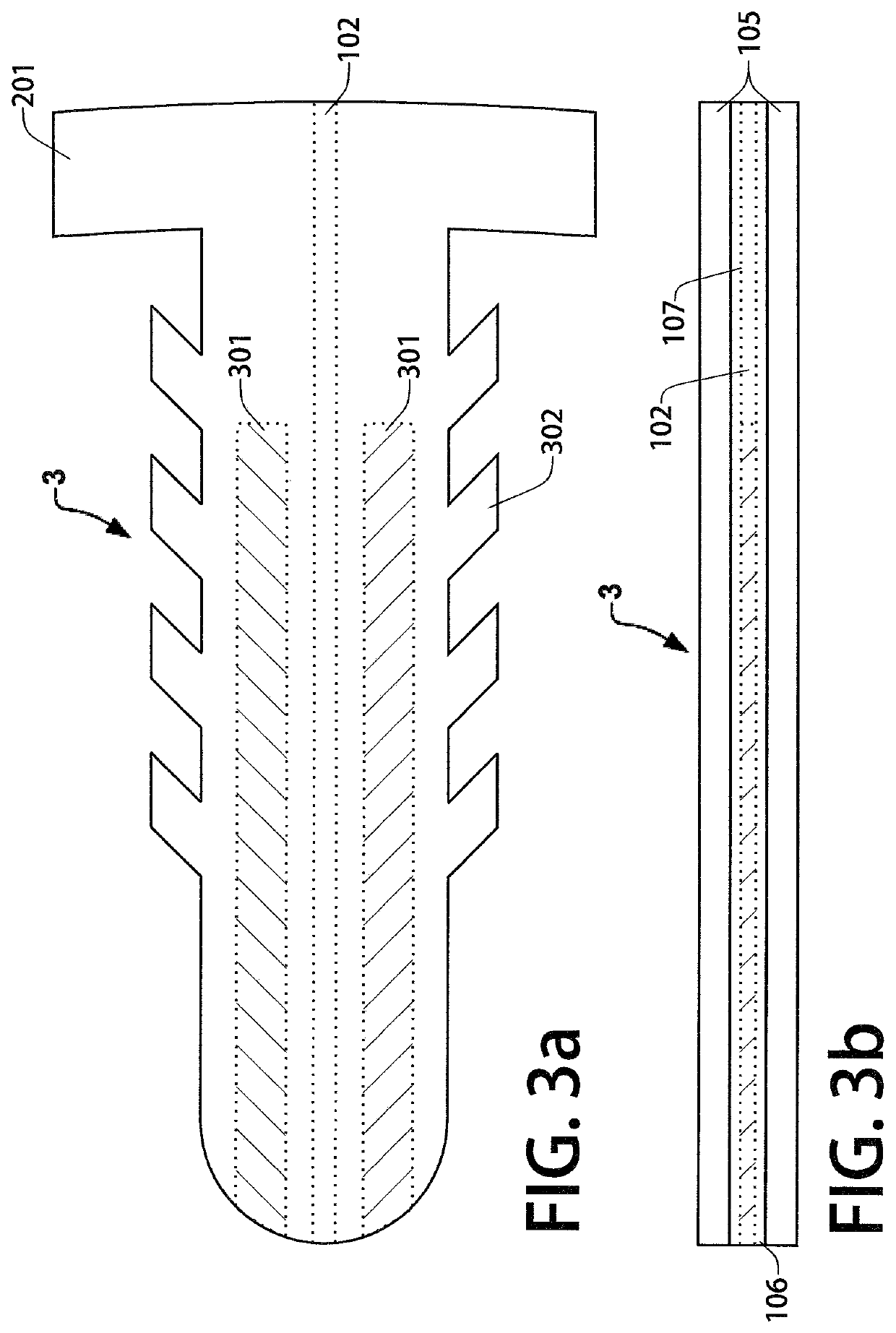Implantable ocular drug delivery devices and methods
a technology of ocular drug delivery and implantable ocular structure, which is applied in the direction of osmotic delivery, eye treatment, prosthesis, etc., can solve the problems of poor patient compliance, blindness and irreversible vision loss cost nearly 50 billion dollars each year, and the risk of retinal detachment or hemorrhage, so as to prolong the release of the therapeutic inside the eye, avoid inefficiencies and risks, and achieve the effect of more efficient ophthalmic treatmen
- Summary
- Abstract
- Description
- Claims
- Application Information
AI Technical Summary
Benefits of technology
Problems solved by technology
Method used
Image
Examples
Embodiment Construction
[0036]FIG. 1a is a top view of a first example embodiment trans-scleral implant (or simply “device 1”) in which at least a portion of the implant is present within the anterior chamber when the device 1 is implanted in an eye. This example embodiment may act both as an aqueous shunt and as a non-biodegradable intraocular drug delivery implant. FIG. 1b depicts a side view of device 1. An inner polymer layer 106 is disposed between the top and bottom outer polymer layers 105. The outer polymer layers 105 may be composed of thermoplastic polyurethane or a similar biocompatible polymer. In this embodiment, a microchannel 102 is disposed within the inner polymer layer 106 and runs through the length of the device to shunt aqueous humor from the anterior chamber of the eye to the tear film, lowering the intraocular pressure of the patient. In some embodiments, the inner polymer layer 106 and channel walls 107 are composed of a hydrophilic, anti-biofouling polymer to prevent the formation ...
PUM
| Property | Measurement | Unit |
|---|---|---|
| height | aaaaa | aaaaa |
| height | aaaaa | aaaaa |
| height | aaaaa | aaaaa |
Abstract
Description
Claims
Application Information
 Login to view more
Login to view more - R&D Engineer
- R&D Manager
- IP Professional
- Industry Leading Data Capabilities
- Powerful AI technology
- Patent DNA Extraction
Browse by: Latest US Patents, China's latest patents, Technical Efficacy Thesaurus, Application Domain, Technology Topic.
© 2024 PatSnap. All rights reserved.Legal|Privacy policy|Modern Slavery Act Transparency Statement|Sitemap



